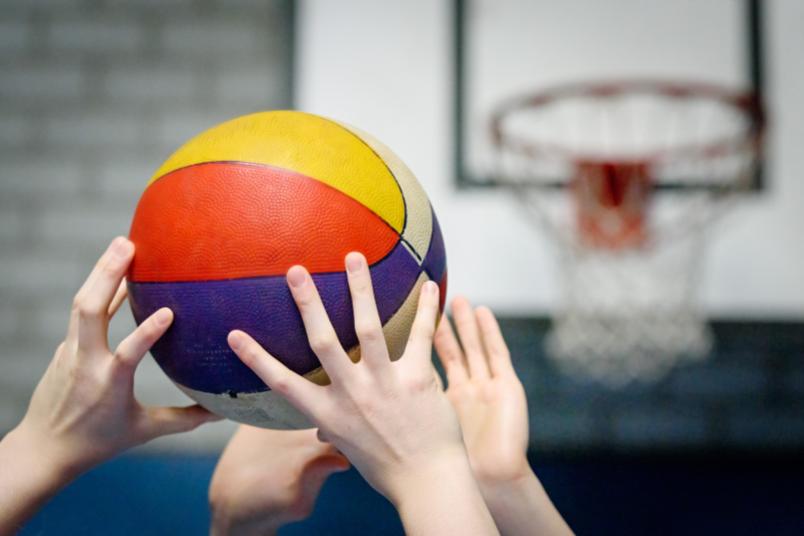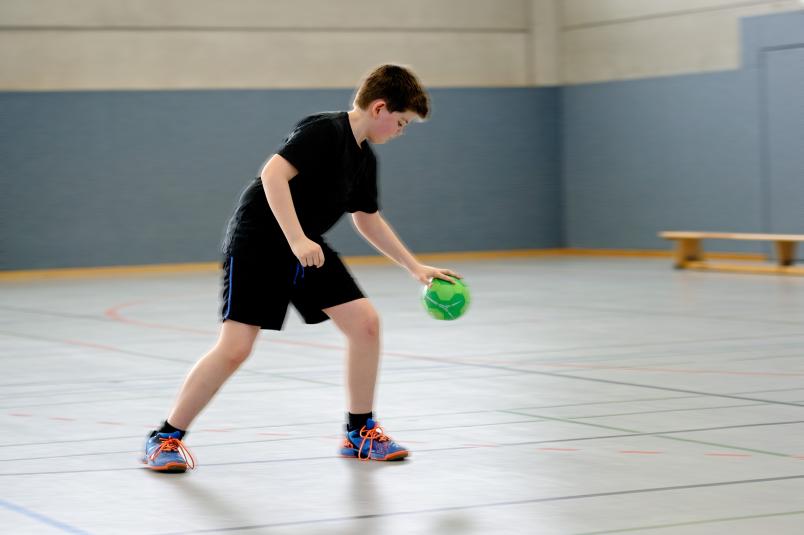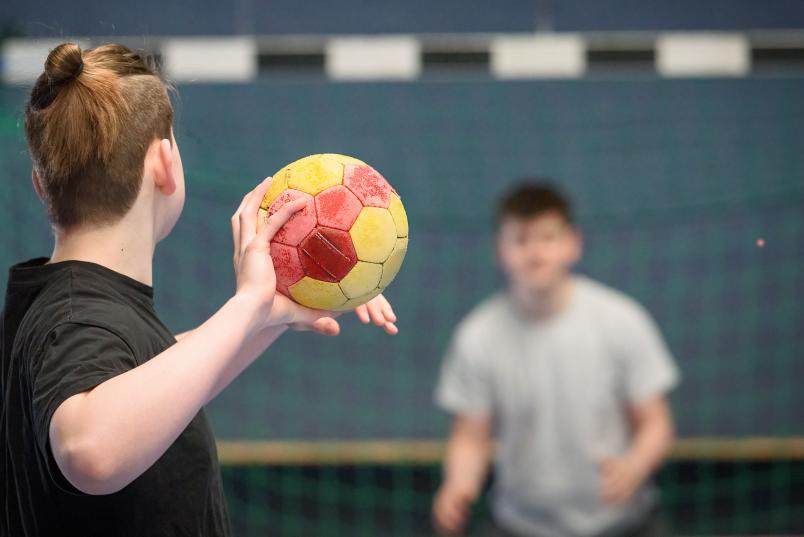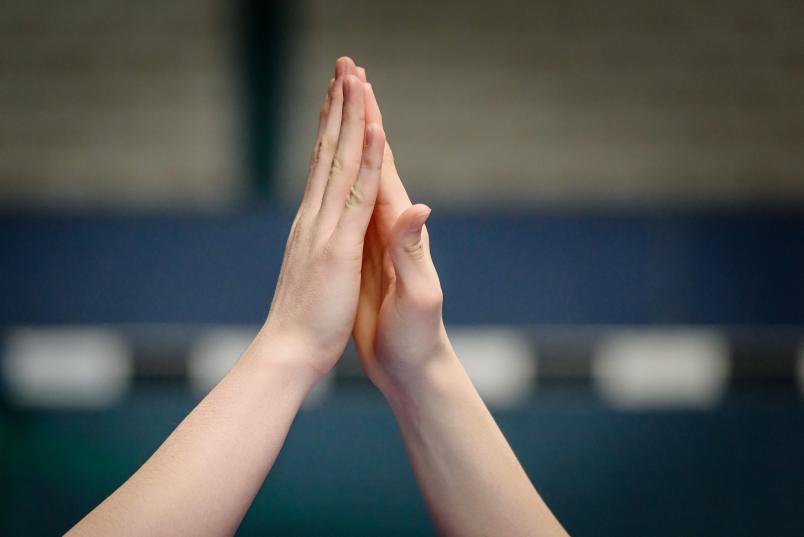
Interview
Putting up with uncertainty
Sport educationalist Christian Gaum explains in our interview how values of our peaceful coexistence – such as fairness, tolerance and respect – can be taught in physical education (PE) classes.
“Solidarity is not possible without differences,” says Professor Christian Gaum. In our interview, the sport educationalist explains how fair and respectful interaction with each other can be taught in PE classes. Gaum is convinced that physically tangible experiences of values like fair play are important for peaceful coexistence in pluralistic, democratic societies. In this context, he advocates physical education that breaks away from performance-oriented sport organised in clubs and embraces different perspectives on movement, play and sport instead.
Professor Gaum, what does solidarity mean to you and what values do you associate with it?
Our ability to share in the feelings and emotions of others is what holds our world together. I consider solidarity to be a fundamental ability and a value that is crucial for sustaining community and solidarity in the first place.

In my discipline, I look into values such as fairness, tolerance and respect, which are known as sporting values, but which are of course not exclusively sporting values, but rather universal values of our social coexistence.
Now, negative values also show up in athletic interaction, such as unfairness or ruthlessness. Where do sport educationalists stand on this?
It is very important for sport pedagogy to understand that these dark sides of sport do exist – namely unfairness, lack of respect, intolerance. I’d go even further: a major problem is that values that can be extremely positive can flip into the negative – in other words, they are ambivalent. Performance, for example, is an intricate, ambivalent pedagogical value, because it can flip to the point where I put my performance in the foreground and define it solely by leaving others behind. This is in fact not uncommon in sport. Performance is then conflated with success, and we have to be careful with that in our sporting practice.
How can the desired values be instilled, for example in PE classes?
We must be aware that physical education doesn’t always automatically achieve positive outcomes. A typical example is when the teacher says: “Now we’ll be playing a competitive game and the losers will clean up the gym.” This means that the losers are sanctioned. This teaches children and teenagers: “Winning is the only thing that counts.”
In order to communicate values in and through sport, it’s crucial that we don’t approach teaching in a purely cognitive and knowledge-based way. Otherwise, physical education wastes a tremendous potential, because PE classes is where students can directly experience the values in class. In other words, students don’t merely hear, “You should do this, you should do that”, but they realise and experience what it feels like when someone treats them without respect.
What are the real life situations where students can have such experiences?
PE classes involve a lot of playing. Playing is a basic human need. When we play, we learn how to interact with others. Or to put it another way: we learn to coordinate our own actions with the actions of others. As a teacher, I should involve the kids directly in the design of the game, whenever possible. For example, they can have a say in setting the rules. This is how they learn that they are responsible for how the game evolves as it goes along and what they experience in the process.
In the next step, during the game, they then experience first-hand what the game feels like: does it feel good for everyone, or only for the players who have won? And why is that? Our research has shown: children and teenagers have a good intuitive grasp of when a game works and when it doesn’t. They don’t enjoy games that involve constant teasing or intolerant behaviour.
How can you measure these experiences empirically?
I can’t measure such physical experiences directly. The participants find it very difficult to verbalise it. The language of sport is not the spoken word. Still, we managed to record their observations and experiences through narrative interviews. This requires a lot of effort, but it is a valuable qualitative method.
In addition, we used quantitative questionnaires to ask the following questions: how do kids rate the cardinal virtues, such as fairness? What is their understanding of fairness? Does it only have something to do with rules? Or is it also about gestures: helping each other up, being there for each other, the handshake after the game. And there are some who say that fairness is only good as long as it benefits them personally.
What did the evaluation of these questionnaires reveal?
For PE in schools, the results are encouraging, but for organised sport, they are rather sobering. The longer children and teenagers participate in organised competitive sport and the higher their performance level, the more they tend to develop an instrumental understanding of fairness: I’m in favour of fairness as long as it’s useful to me. And the primary goal is often success.
Overall, and this applies to organised competitive sport as well as to sport in schools, the evaluation of values such as tolerance and fairness depends on how much uncertainty in the game people are willing to tolerate. If they value not knowing how the game will turn out, then tolerance and fairness will be important to them. However, people who want absolute certainty, who want to win at all costs, consider tolerance and fairness to be a handicap. The latter have a problem putting up with uncertainty.

It really pays to seek out situations of uncertainty.
Which conclusions do you draw from this for sports didactics?
The ability to approach the uncertainties of life, or in this case of sport, with a sense of joy is what it’s all about. And according to our surveys, this is something that kids do feel and are able to express. They do think it’s good and fair when everyone abides by the rules; but they also think it’s a good thing when the game process remains open – as long as the game works and everyone gets a chance to succeed. It really pays to seek out situations of uncertainty, because these are what make a game possible in the first place.
Can this insight be applied to other areas of society as well?
Yes, dealing with uncertainties is extremely relevant to democratic education. It’s about teaching young people to endure contradictions, ambiguities, differences of opinion and conflicts. In order to achieve this, it’s important that children and teenagers learn at an early age that they can’t always assert their own personal interests completely and that not every conflict can be solved, either. One way of going about this is by realising that conflict is vital to democracy. I believe that sport can make a positive contribution in this respect.
What form could this take?
Social negotiation processes can be experienced physically in PE classes. This can be done by using joint movement and game design. I could get the kids to develop movement choreographies involving balls and hoops, for example. In the process, they would have to reach a consensus not only verbally, but also through movement. I strongly advocate physical education that is detached from performance-oriented organised club sports. After all, why should we copy sports clubs in PE lessons at school? PE is not voluntary, it’s compulsory. It brings together a very heterogeneous group that is sometimes more, sometimes less enthusiastic.

Physical education at school must allow for different movements and perspectives.
Physical education at school must allow for different movements and perspectives. And therein lies a certain educational potential: if they shape their physical education together and develop enthusiasm for movement, play and sports culture in the process, then sport can, to put it cautiously, also have a positive effect on social solidarity.
Which role do PE teachers play?
Sport alone can’t fix everything. It’s the exercise instructors, teachers and trainers who do valuable work and act as role models. This role model function is also often attributed to top athletes. The question that needs to be asked is: in what way exactly are they a role model? Is it that they win medals and are successful? Or is it their personality, is it their inspirational stories? One thing that hardly ever happens is that we ask our value promoters how they feel about it. As part of our new research project, we are now investigating how athletes deal with this educational mandate attributed to them, with their status as role models. Former NBA basketball player Charles Barkley has allegedly once said: “Just because I dunk a basketball doesn’t mean I should raise your kids.”


